Our restaurant-quality Creamy Chicken features tender, seasoned chicken enveloped in a rich, velvety sauce, accompanied by vibrant, crisp-tender vegetables. We finish things off with a handful of fresh basil and a splash of lemon, resulting in a bright, summery vibe and a downright delicious meal!
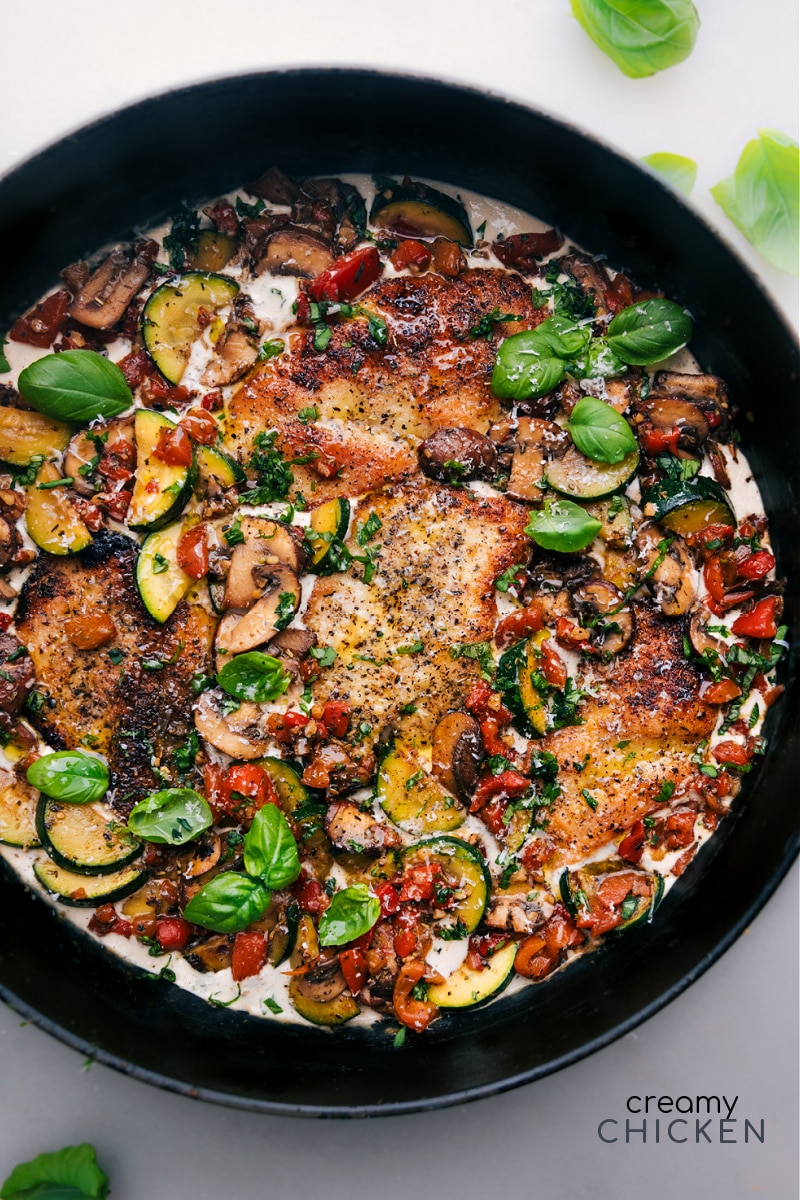
Creamy Chicken
This Creamy Chicken recipe brings restaurant-quality dining right into your home kitchen, impressing with its blend of succulent chicken, luxurious cream sauce, and crisp-tender vegetables. The vibrant colors and delectable flavors make this dish a guaranteed crowd-pleaser, perfect for wowing your guests at dinner parties or casual gatherings.
The best part? It’s all prepared in a single pan, simplifying the cooking process without sacrificing a bit of flavor.
Why We Use One Skillet For This Creamy Chicken
Using the same skillet to cook the chicken, vegetables, and sauce in our Creamy Chicken recipe is a strategic approach that enhances the depth and complexity of flavors in the dish. This method of cooking is best for a couple of key reasons:
- Building flavor: When the chicken is cooked first, it leaves behind flavorful bits, often referred to as “fond,” stuck to the bottom of the skillet. These bits are packed with flavor. When the vegetables are cooked in the same skillet, they pick up this residual flavor. Similarly, when the sauce is prepared in the same pan, it not only absorbs the flavors of the chicken and vegetables but also incorporates the fond, resulting in a rich and layered flavor profile.
- Efficiency and simplicity: Using one skillet simplifies the cooking process and makes clean-up easier. It’s an efficient way to infuse the dish with flavor while keeping the cooking process streamlined.
Preparing The Chicken
When preparing this Creamy Chicken recipe, the method in which we prepare the chicken breasts plays a critical role in both the cooking process. Cutting the chicken breasts in half widthwise to create thinner fillets is a technique known as butterflying. This method serves several purposes:
- Even cooking: By reducing the thickness of the chicken breasts, we ensure that they cook evenly. Thicker pieces may remain raw or undercooked in the center by the time the outside is perfectly cooked. Thin fillets, on the other hand, cook thoroughly in less time, avoiding this problem.
- Improved texture and flavor absorption: Butterflying the chicken breasts also helps in achieving a more desirable texture. The chicken cooks quickly, sealing in the juices and retaining its tenderness. Moreover, the increased surface area allows for better absorption of the seasonings and sauces, infusing the chicken with the rich, savory flavors of the dish.
- Faster cooking time: A thinner piece of chicken will cook more quickly than a thicker one, which can be particularly useful when trying to prepare a high-quality, restaurant-style dish in a shorter amount of time.
There are two more steps that contribute to achieving the best possible result: patting the chicken dry with a paper towel and pounding fillets to an even thickness.
- Patting the chicken dry: It’s crucial to pat the chicken dry before applying the seasonings or cooking it. Removing the excess moisture from the surface of the chicken allows for a much better sear when it hits the pan. A good sear contributes to the Maillard reaction, a process that creates a deliciously crispy and flavorful crust on the surface of the chicken. If the chicken is not patted dry, it may steam rather than sear, leading to a less flavorful result.
- Pounding the chicken: After butterflying the chicken breasts to create thinner fillets, pounding them to an even thickness further ensures that the chicken cooks evenly. Chicken breasts are naturally thicker in the middle, which leads to the thinner ends being overcooked by the time the middle is done. Pounding the chicken to a uniform thickness eliminates this issue. Additionally, it also tenderizes the meat making this Creamy Chicken dish even tastier!
Sauté the Veggies
We sauté zucchini, mushrooms, and roasted red bell peppers in the same skillet that was used for the chicken, to imbue these veggies with the deep, savory flavors already developed in the pan.
In the sautéing process, the vegetables cook quickly over medium-high heat with a small amount of fat. This method promotes caramelization on the surface of the veggies, enhancing their natural sweetness and adding a layer of complexity to their flavor profile.
Notably, sautéing also helps maintain the texture of the vegetables. Unlike methods such as boiling or steaming, sautéing preserves the vegetables’ natural crispness while still cooking them to tender perfection. This adds a satisfying bite to this Creamy Chicken.
Quick Parmesan Cream Sauce
There are a few ingredients worth bringing attention to in this cream sauce:
- Parmesan cheese: Opt for a block of Parmesan cheese and grate it on the small holes of your cheese grater to get the perfect melt. This also ensures an accurate measurement and prevents the dish from becoming overly salty. Just gently pack it into your measuring cup and you’re good to go!
- Low-sodium chicken broth: We use low-sodium chicken broth to maintain balance and control the overall saltiness of this dish. Since we’ve seasoned the chicken and vegetables, and Parmesan cheese naturally has a good amount of salt, there’s no need to add more.
- Heavy cream: This ingredient plays a pivotal role in enhancing the dish’s flavor and texture. Its high-fat content lends a rich, creamy consistency to the sauce, balancing the flavors and providing a luxurious mouthfeel. Plus, fat acts as a flavor carrier, ensuring every bite is as delicious as the last, and it helps balance the acidity and heat from other ingredients. Lower-fat or dairy-alternative products unfortunately don’t offer the same richness or thickness as heavy cream does.
What To Serve With Creamy Chicken
Creamy Chicken is incredibly versatile. The rich flavors and creamy texture complement a variety of accompaniments. Here are a few suggestions:
- Pasta: Toss the creamy chicken and veggies with freshly cooked pasta, for a hearty and satisfying meal. I like to add the pasta directly to the cream sauce and toss it with the sauce and reserved pasta water. Once the pasta is nicely emulsified, I add in the veggies and diced chicken. Toss and devour — so good!
- Rice: Serve the creamy chicken over a bed of steamed rice. The rice will soak up the sauce, providing a delightful contrast with its mild flavor and grainy texture.
- Bread: A slice of crusty bread is great for mopping up any remaining sauce on your plate. You won’t want any of this delicious meal going to waste!
- Vegetables: Serve the creamy chicken alongside or on top of steamed or roasted vegetables, such as broccoli, asparagus, or cauliflower for a low-carb option. The fresh, crunchy veggies balance out the richness of the creamy sauce.
- Salad: A fresh, green garden salad with a light vinaigrette serves as a refreshing counterpoint to the creaminess of the dish, providing balance and adding a touch of freshness to your meal.
More Chicken Dinners:
- Chicken Noodle Casserole with a crunchy panko topping
- Honey-Garlic Chicken Thighs made in the pressure cooker (Instant Pot)
- Chicken Stew with potatoes, carrots, and celery
- Chicken Alfredo Recipe with the best creamy sauce!
- Chicken Pasta with sun-dried tomatoes and basil
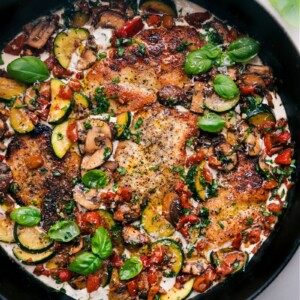
Creamy Chicken
Ingredients
- 1 lb. (2 large) boneless skinless chicken breasts
- Fine sea salt and pepper
- 3 teaspoons Italian seasoning, separated
- 2 tablespoons olive oil
- 1 tablespoon butter (or use more oil)
- 1 medium zucchini, cut to half moons (1½ cups)
- 2 cups (5 oz) sliced brown mushrooms
- ¾ cup diced jarred roasted red bell peppers
- 1½ teaspoons minced garlic
- 1 cup low-sodium chicken broth (Note 1)
- 1 cup heavy whipping cream (Note 2)
- 2 teaspoons Dijon mustard
- ⅓ cup finely grated Parmesan (Note 3)
- ¼ cup fresh basil, ribboned (optional)
- Optional, but recommended: fresh lemon
Instructions
- PREP VEGGIES: Cut the zucchini in half lengthwise and then slice into half moons. Slice the mushrooms and dice the roasted bell peppers.
- CHICKEN: Slice each chicken breast in half widthwise to create two thinner pieces. Pound lightly if necessary to ensure even thickness. Combine 1 tsp of Italian seasoning with salt & pepper (I add ½ tsp salt and ¼ tsp pepper) and season one side of each chicken piece.
- COOK CHICKEN: Heat 2 tbsp olive oil in a large, heavy-bottomed skillet over medium-high heat. When hot, add the chicken, seasoned side down. Season the other side with the remaining seasoning mixture. Cook undisturbed for about 4 minutes, then flip and continue cooking for another 3-4 minutes or until the chicken is golden brown and fully cooked (internal temperature should reach 165 degrees F). Remove chicken from the skillet and cover with foil to keep warm.
- COOK VEGGIES: Using the same skillet, add the butter, zucchini, and mushrooms. Cook for about 3-5 minutes or until crisp-tender, stirring occasionally. Add a tiny pinch of salt and pepper, then add the diced roasted red bell pepper, 1 tsp Italian seasoning, and the minced garlic. Stir until fragrant, about 30 seconds; transfer the vegetables to a plate.
- CREAMY SAUCE: To the skillet, add ½ cup chicken broth and reduce the heat to medium. Scrape the pan to release any browned bits and cook until the broth has reduced to about half, about 1 minute. Add the remaining ½ cup broth, the cream, the remaining 1 tsp Italian seasoning, the Dijon mustard, and the Parmesan. Bring to a simmer, then reduce heat to medium and simmer for 2 to 3 minutes until thickened. Stir frequently. Stir through basil if using.
- FINISH: Taste sauce, adjust seasoning as needed. I love to add some fresh lemon here -- delicious if you're into that kind of thing. There are two options for serving: either toss the cream sauce with freshly cooked pasta and some reserved pasta water until nicely emulsified, then add the chicken (diced or thinly sliced) and the cooked vegetables, OR return the chicken and any accumulated juices to the skillet with the cream sauce, spoon the veggies around the chicken, and serve straight from the skillet. Garnish with additional freshly grated Parmesan if desired. Enjoy hot!
Video
Recipe Notes
Nutrition
Nutrition information is automatically calculated, so should only be used as an approximation.
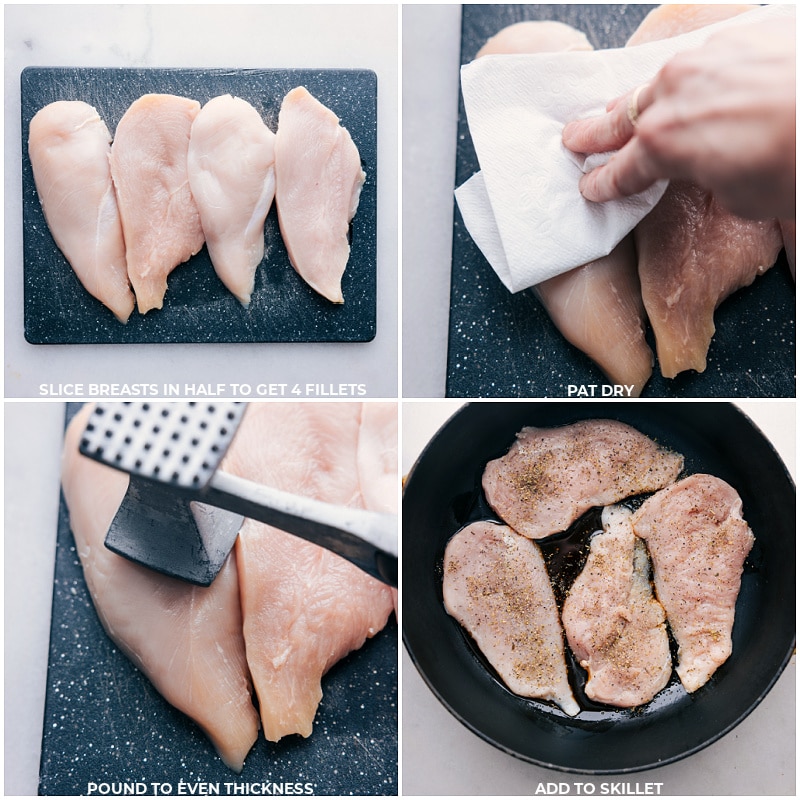
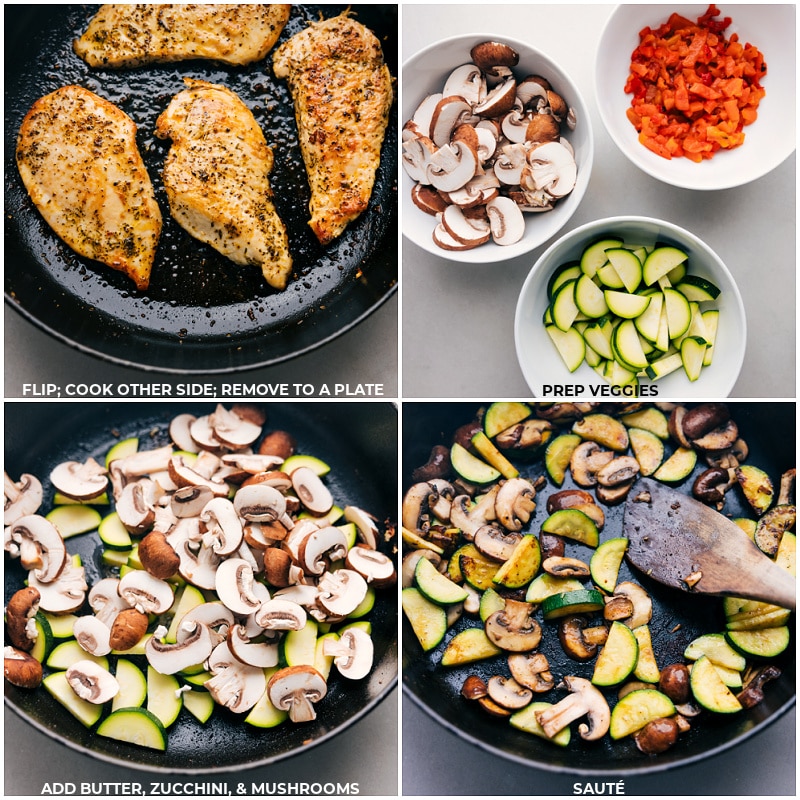
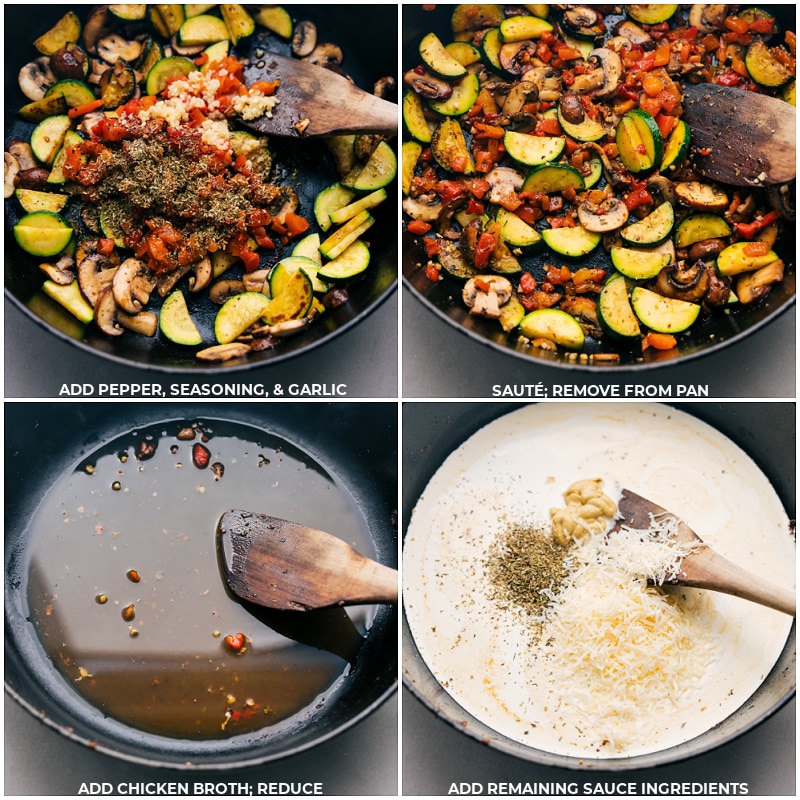
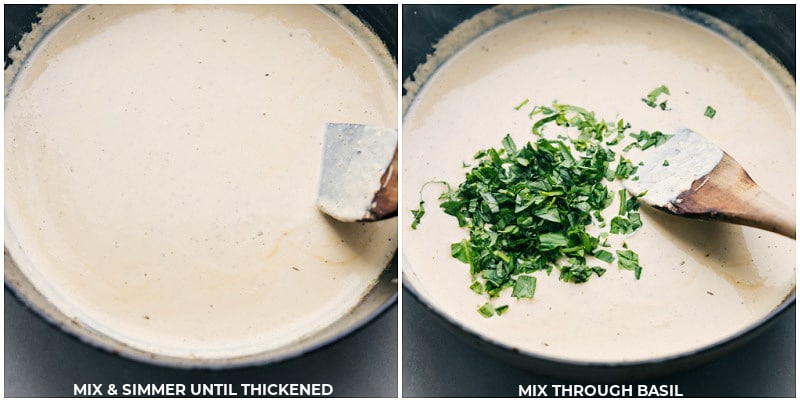
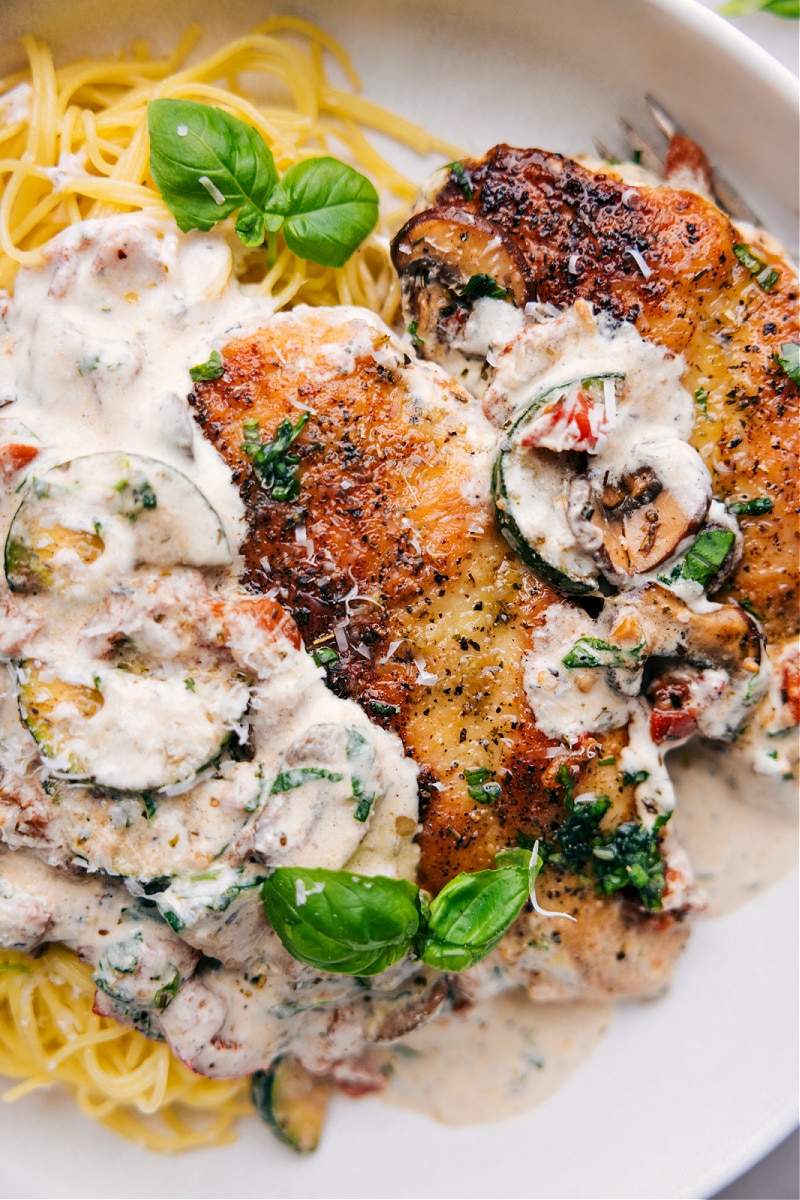
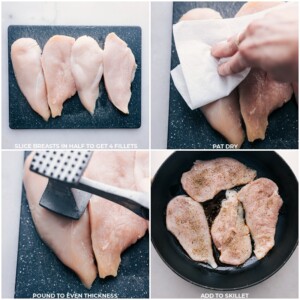
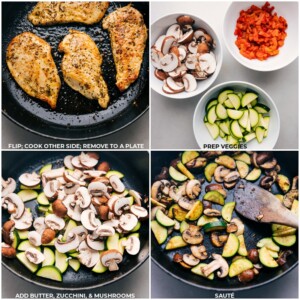
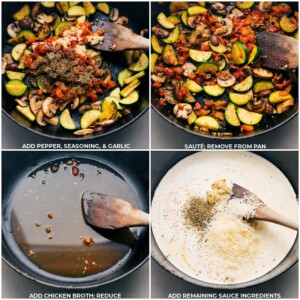
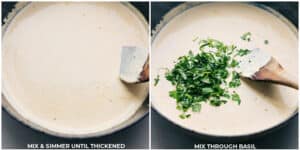



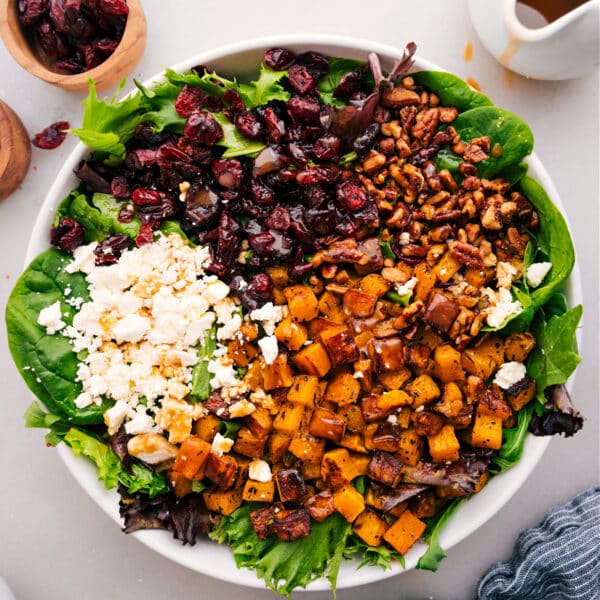
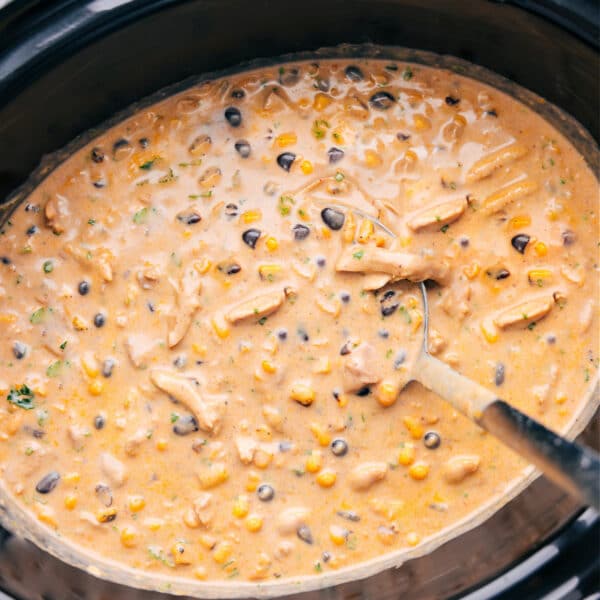
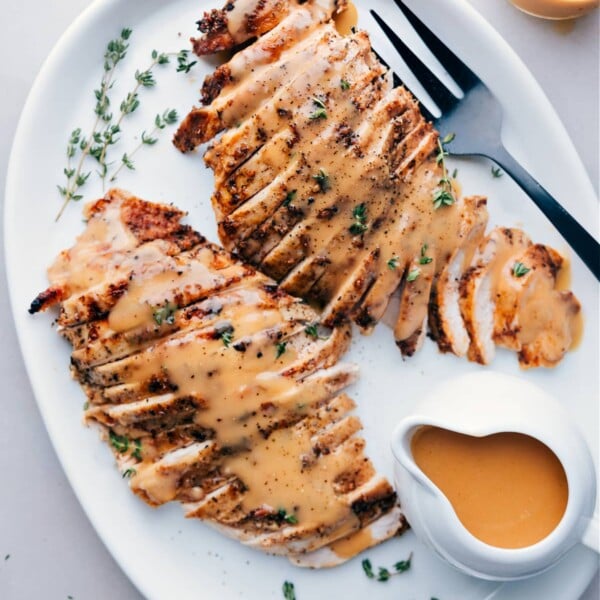









Made this tonight and I liked that you cooked the chicken sauce and veggies separately. If you live in a house with a picky eater this makes it so much easier. I combined the sauce and noodles and then served the chicken and veggies on the side.
So happy to hear this was a hit! Thanks so much Mary! 🙂
Do you think something else can be substituted for the heavy cream? My husband is sensitive to dairy, but this looks so good! Maybe almond milk? Coconut?
Unfortunately other milks (especially nut based) won’t thicken up and I believe coconut milk would give it a funny taste. Sorry to not be of more help.
Why does this recipe have so much cholesterol and fat? Because we are cutting out the fat from the chicken..
The heavy cream!
Wow, I love to explore my favorite chicken recipes every time through blogs and videos, thanks for sharing this with us.I gonna add this to my food list.
This chicken looks delicious!
hey girl- this looks so yummy!
This looks amazing! I cannot wait to try it!